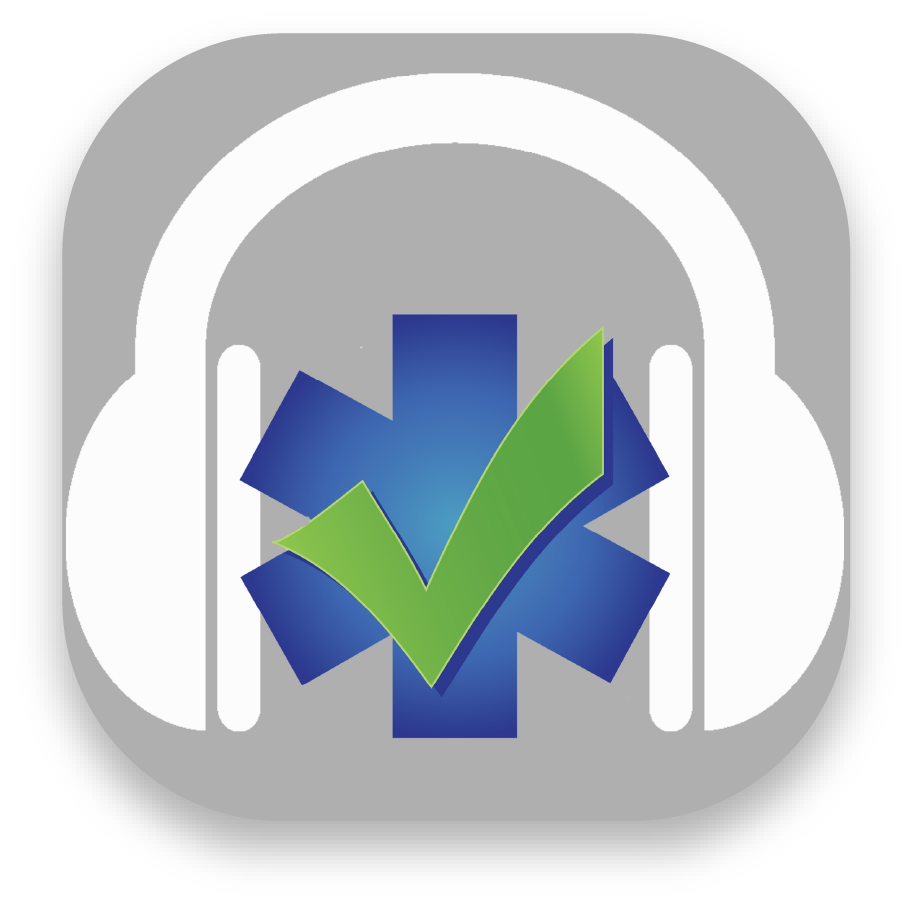
Dan Limmer, BS, NRP

by Limmer Education
Our articles are read by an automated voice. We offer the option to listen to our articles as soon as they are published to enhance accessibility. Issues? Please let us know using the contact form.
You have chosen to take an amazing but demanding course. We designed this post to help you study and prepare for your in-class and certification exams. These are small things you can do that provide significant value later.
While there are many study tips and tricks, commitment is ultimately required for your success—and the patients you will eventually treat deserve nothing less.
Most courses involve several components. You will have a textbook, an online learning management system (LMS) with assignments, and possibly other projects.
When you do this coursework, the object isn’t to simply get through it. You should be learning from it. If you skim the chapter and take the LMS tests with a “fake it till you make it” approach or repeatedly take tests to get the grade you need without really reading, you are doing yourself a disservice. This material is vital preparation for the subsequent lecture, group work, and case-based activities.
Writing, whether taking notes, outlining a chapter or audio, drawing diagrams, or making flashcards, is an integral part of the study process. Writing helps you take the material you have learned, filter and analyze it through your brain, and then spit it back out on paper. It is a powerful process not just for remembering but for understanding.
Don’t know what to write? Here are some ideas:
Rephrase the chapter objectives as questions. Write them out and answer them. It is a great way to know if you have learned the material you need to know.
Make flashcards with important chapter topics and any highlighted terms you don’t know. If you aren’t sure what to make cards for, consider how much time the book spends on a topic. If it spends more time, it is more important. Signs, symptoms, pathophysiology, and management are usually very important.

The concept of spaced repetition is prevalent in education today. This principle says that multiple study sessions where you make yourself recall material over a period of days are better than one big study session. Use the flashcards to quiz yourself a couple of times each day, starting several days before the exam.
While I have written several texts, I know you need to do more than merely reading and re-reading the text. Read, write, reflect, think, remember, and apply are words that come to mind for what you should be doing during your study sessions.
There are a lot of things you need to memorize. Even the best students sometimes fail to recognize that the memorization you do must eventually lead you to apply the material rather than just recall the material.
For example, you will learn how to splint a leg. You will stabilize the leg, check distal circulation, sensation, and motor function (CSM), apply a splint that immobilizes the bone ends as well as the adjacent joints and then recheck CSM. The overall goal is to stabilize the fracture and prevent further harm.
That seems relatively easy to remember. The problem is that you might get a test question (and a real-life call) where a patient has two fractures or a fracture with internal injuries and shock. Perhaps the leg is broken and severely angulated. This is where the application part comes in.
You must apply what you have learned to a variety of situations.
Through the reading, lecture, activities, and labs, you will be well prepared for this—if you take advantage of these opportunities.
Most of the advice thus far is about what you can do outside of class. There are things you can do in class, too.
First, pay attention. If you are on your phone, sleeping, daydreaming, or otherwise not engaged, you will likely do poorly. You should take notes. Things your instructor writes or draws on the board or slides are usually important and worth writing down. Writing helps improve remembering.
If you have questions or aren’t sure about something, ask. If you have a question, someone else usually has the same question.

There is power in numbers—especially when you are part of a focused study group. Whether you study with one classmate or a larger group, study groups work. Here are some suggestions to make your group valuable:
Have members of the group quiz each other using flashcards. Both people learn when doing this.
If a larger group, have each member outline a chapter or part of a chapter. If you are studying altered mental status, one group member may cover diabetes while another covers stroke, and another seizures. The person responsible for a section creates an outline handout and then does a small presentation/discussion about what they learned.
Study groups work because it harnesses the power of a group. The downsides are when groups become more social than study and when members don’t contribute—or contribute inaccurate information.
If you have done everything recommended up to this point, you will be in a good position to do well on the test. But there is one more thing. Reading and focus. OK. That is two more things, but they go together.
EMS (and medicine in general) is about details. You must take your time on tests and read the questions carefully. Overlooking one word or not recognizing the significance of something in the question makes it likely you will get that question wrong. When your instructor goes over an exam in class and explains why the correct choice is correct, students find that they missed something relatively obvious. Learn from each of those.
If you take practice tests, don’t just fly through the questions. That isn’t learning. Use these steps when taking practice tests:
Note (on a computer or paper) any time you see a term or concept in a practice test with which you aren’t familiar. This is something you should look up and study.
If you get a question wrong, don’t just move on to the next question. Figure out why you got it wrong. Read the rationale, then look back on the question. Determine what you missed or misinterpreted that would have helped you get the questions correct. This will help you with future questions.
All of the recommendations above work. Students have been successfully passing EMS classes using them for as long as there have been EMS classes. The recommendations will only work if you are committed to succeeding in the course.
Students who are committed make study a priority. They perform the recommendations in this document as needed (not every student will study in the same way). We recognize that life is busy and sometimes throws curves, but students who are prepared before those things happen can absorb the disruption to their study schedule much easier than the person who hasn’t prepared up to that point.

If you find that you need more help learning the class material or preparing for EMS exams, Limmer Education makes study apps to help. Different people learn best through different tactics. Here are a few study app recommendations for common learning styles:

The Audio Review apps are a podcast-like series of educational conversations to improve knowledge and understanding of critical concepts for EMT and AEMT students. Audio apps stream through LC-Ready.com.
![]()
EMTReview.com is a complete NREMT prep site, but it's valuable for keeping up with class too. Attend weekly, interactive study sessions where you can ask any question you want and get real-time tutoring. There are also study guides, diagnostic exams, interactive practice tests, videos, articles, checklists, and more.

The Limmer Education YouTube channel is filled with videos that include practice NREMT questions, sample lectures, podcast previews, and video series on topics like burns and respiration.
As you get closer to taking the NREMT, we also have a 2-Hour NREMT Review Video, which is a deeply insightful and helpful streaming video. It's basically NREMT boot camp.

Dan Limmer, BS, NRP

Dan Limmer, BS, NRP

Limmer Education
I learnt a lot from this